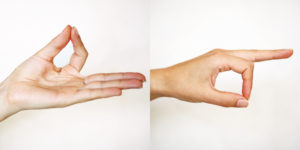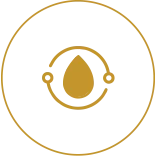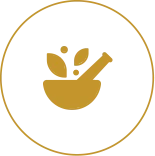One of the most effortless ways to feel energized, fresh and peaceful is to practice Mudras or Yogic gesture. It can do what your coffee promises to, with zero side effects. Whether you need to get your brain engine buzzing or whether you want your metabolism to be tamed, Mudras are your natural Ayurvedic recourse. In this series, we will delve into the various Yogic Mudras, how they should be practiced and their untold benefits. Today we discuss-Gyan Mudra.
What are Mudras?
Mudras are a healing modality. The Sanskrit word Mudra is broadly translated as a gesture. A Mudra generally involves the tips of the fingers and placement of the fingers in a certain fashion to give the desired result in balancing the three Doshas. Mudras, when used with breathing exercises, increases the flow of life force in the body, leaving you feeling energized and relaxed even after a long haul.
Gyan Mudra
The Sanskrit word ‘Gyana’ or ‘Jnana’ translates into ‘knowledge’ and the word mudra, as discussed above, is a gesture or in some texts referred to as an ‘attitude’. So this gesture or Mudra is known as the attitude of intuitive knowledge.
How Is It Done?

- Fold the Index finger of both hands in a way that the tips of the index finger are touching a little below the tip of the corresponding thumbs.
- Straighten the other three fingers and leave a slight gap between them.
- Keep your hands on the knees. The palms should be facing downwards, towards the floor.
- While holding this Mudra, take a few deep long breaths. You can have the best results from this practice along with Ujjayi breath which is taught as part of The Art of Living Programs.
Please note, this is the major difference between Chin and Gyana Mudra. In Chin Mudra, your palm faces upwards, towards the sky. But we will leave that for another discussion.
Significance of Gyan Mudra
According to the ancient classical texts that discuss in some depth the applications and symbolism behind these mudras say, that the three straightened fingers represent the three qualities or Gunas in an individual- Tamas (represents inertia, laziness, darkness, and ignorance, ) Rajas(defines action, passion, activity, restlessness),and Sattva (purity and high Prana or Life force).
The symbolic meaning conveys that these three Gunas must be transcended to move from the darkness of ignorance to the light of Self-knowledge or Atma Gyan. The thumb is the symbol of the consciousness or eternal truth. The index finger represents an individual who bows (bends) to touch the supreme king that is the Consciousness as if to acknowledge its ultimate power over all that is unreal and temporal. The union of the two fingers also symbolizes the union of the individual with the Self, that the two are not really separate and that one is part of the other.
Some Of The Benefits Of This Mudra
Even when practiced with normal breathing, it can have deep, calming effect on our nervous system. In Ayurveda, this mudra is known to stimulate the air element which is responsible for the proper functioning of vital glands and organs like the brain, pituitary glands and thyroid glands in the body. Here are some additional benefits of practicing Gyana Mudra-
1) Good for patients of Insomnia
If you have sleep issues, this is a great Mudra to realign your sleep cycle. The practice has a cooling effect on your body and mind which gives you restful sleep.
 2) Digestion- The mudra is also said to help improve digestion by aiding the digestive fire.
2) Digestion- The mudra is also said to help improve digestion by aiding the digestive fire.
3) Focus– it gives you a calm, centered mind and a sharp, focused intellect.
4) Memory power– Yet another benefit is it enhances your memory power. This can work wonders for young adults and students.
5) Stress relief– The Mudra is an effective solution to dissolve the stress and tension in your nervous system.
6) Brings back enthusiasm– If you are having a day full of inertia and dullness, make sure you practice this mudra for 5-10 minutes at least. You will see the difference in your level of Prana or life force reflecting through higher enthusiasm and willingness to act.
7) It stimulates the endocrine system and plays an enabling role in regulating your metabolism. It is good for those treating for hyperthyroidism or hypothyroidism and imbalances in the functioning of the pituitary glands.
8) For patients with muscular problems, can practice Gyan Mudra to find relief from the stiffness in the joints and muscles. Since it works with the air element, it helps to dehydrate the fluids in cartilage and joints which are a reason for the pain and stiffness in those parts.










